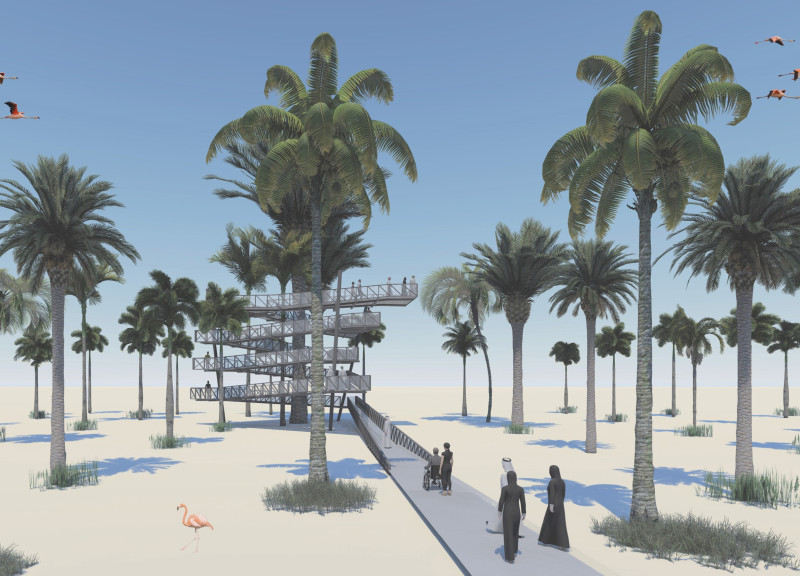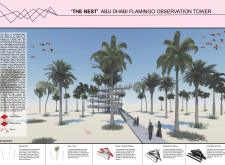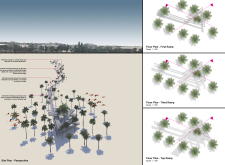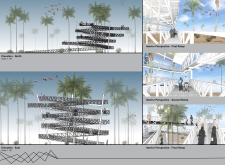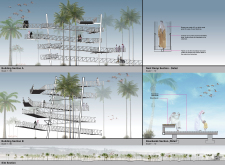5 key facts about this project
The Nest at Al-Wathba Wetland Reserve is located in the United Arab Emirates and is designed to blend with the natural landscape. It takes inspiration from the shape of a bird’s nest, which informs both its structure and how people interact with the environment. The design features a winding boardwalk that allows visitors to explore the wetlands while offering several viewpoints. This setup enhances the experience of observing the local wildlife, particularly the flamingos that reside in the area.
Design Concept
The concept focuses on creating a close relationship between the built environment and nature. The boardwalk serves as a key feature, guiding visitors through the wetlands and providing unobstructed views of the landscape. Its winding form mirrors the natural lines found in the environment, encouraging a connection with the surroundings as people move along its path.
Structural Elements
Columns shaped like palm trees are an important part of the design, providing both support and a visual link to the local vegetation. These columns are essential for the structure's stability while reinforcing the theme of integrating architecture with nature. The ramps are designed to mimic the motion of flamingos, with curves that create engaging experiences for visitors and additional points from which to view the landscape.
Materiality
The boardwalk is made from grated steel, a material selected for its durability and practical benefits. This choice not only ensures the boardwalk is strong but also allows sand and natural debris to filter through, maintaining the ecological character of the wetlands. The openness of the grated design keeps visitors connected to the environment below, enhancing their awareness of the natural setting.
Landings placed at strategic intervals along the path provide spaces for rest and contemplation. These areas invite visitors to pause and observe the surroundings, enriching their experience within the wetlands. By encouraging reflection and observation, the design fosters a deeper appreciation for the ecology of the space.


